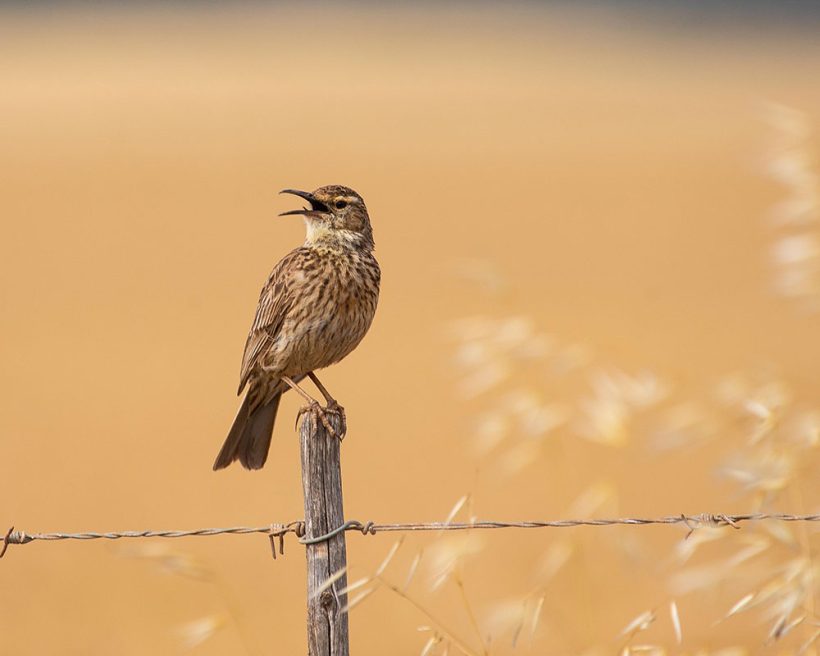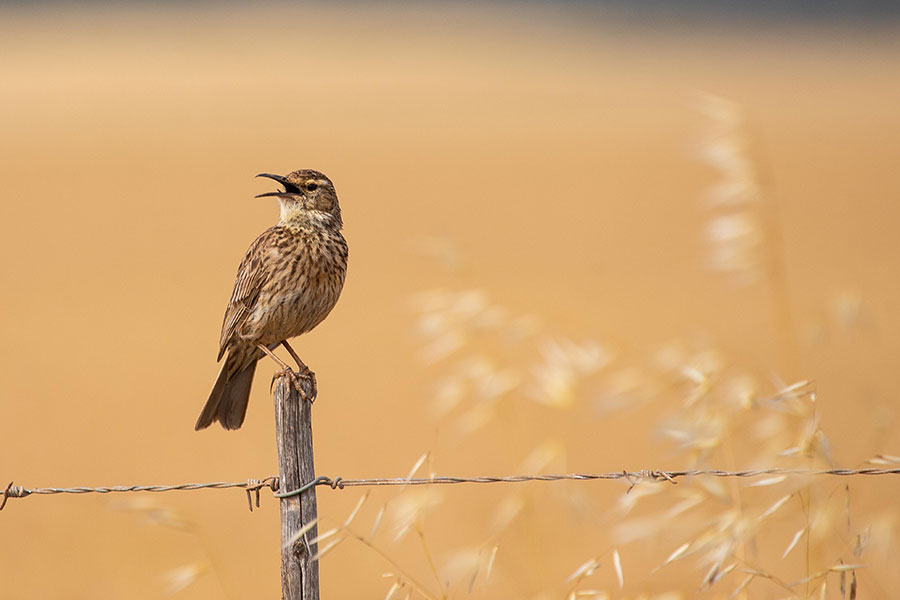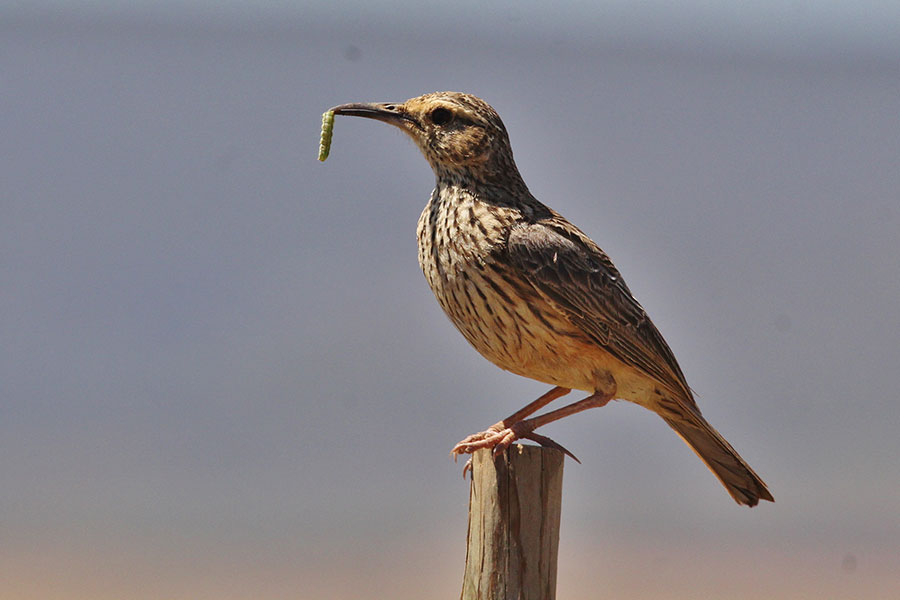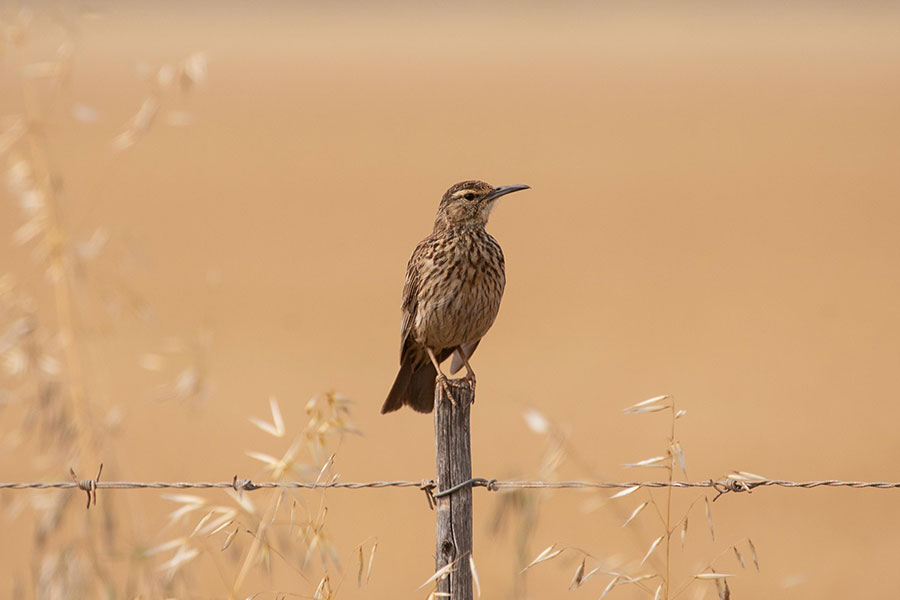By Sanjo Rose
It is a special experience to be the first to study something as discreet as the breeding ecology of a species. As part of an MSc thesis funded through a donation from BTE Renewables (formerly BioTherm Energy), I spent the better part of two years in South Africa’s Overberg region studying the endemic, range-restricted Agulhas Long-billed Lark Certhilauda brevirostris.
Although it is common between the coast of Agulhas National Park and the Langeberg mountains, lack of knowledge about its breeding ecology precludes effective conservation planning. However, evidence-based planning is important, as most of its range overlaps with agricultural activities in the Overberg, where extensive landscape transformation has taken place. Furthermore, there is uncertainty about how the lark will be impacted by large-scale wind energy facilities earmarked for the region.
The key aims of this study were to establish timing of the breeding season, nesting habitat and the main threats to nesting birds. The Agulhas Long-billed Lark’s distinctive repertoire of vocalisations makes it easy to detect in the field despite its fairly nondescript plumage. When nesting, it is alert, shy and secretive, but patience and determination brought exciting new data from 29 nests. The larks showed a preference for nesting in South Coast Renosterveld, with two-thirds of the nests found in fragments of this Critically Endangered vegetation type. This has important conservation implications, as much of the renosterveld has already been lost to agriculture, and illegal clearing will further reduce the larks’ nesting habitat. It also has implications for the positioning of wind turbines.
Reasons for nest failures
Nesting was recorded from late July to early December, with a peak in September–October. Motion-triggered cameras enabled me to observe parental behaviour and determine the cause of nest failures, and by combining field notes with camera footage I could record the full cycle, from nest construction to fledging. This confirmed that the nest is a simple unlined cup made from dry grass at the base of a bush or clump of grass. Between one and three eggs are laid and they are cream in colour with dainty chocolate-brown markings. The female appears to be responsible for nest site selection, construction and incubation, and both the male and female feed the chicks. The length of incubation and the provisioning rate seem to be moderated by temperature, with increased activity in the cooler parts of the day.
The success rate was very poor: only four broods out of 29 nests fledged any nestlings. Eight predator species were recorded raiding nests, including honey badger, caracal and boomslang – even a Helmeted Guineafowl ate a clutch of eggs! It may be easier for predators to locate nests in renosterveld as this vegetation is highly fragmented, but more research is required to understand what specific landscape features influence predation and whether such a high predation rate reflects a recent and potentially problematic change in the lark’s nesting ecology.
The study achieved its broad aims, but more questions have now arisen. For example, how does predation pressure on larks vary across the Overberg, how do larks select mates and territories, and what influences the precise timing of nesting? Most importantly, efforts by organisations such as the Overberg Renosterveld Conservation Trust to protect remaining South Coast Renosterveld need to continue.
This article was first featured in The FitzPatrick Report.




